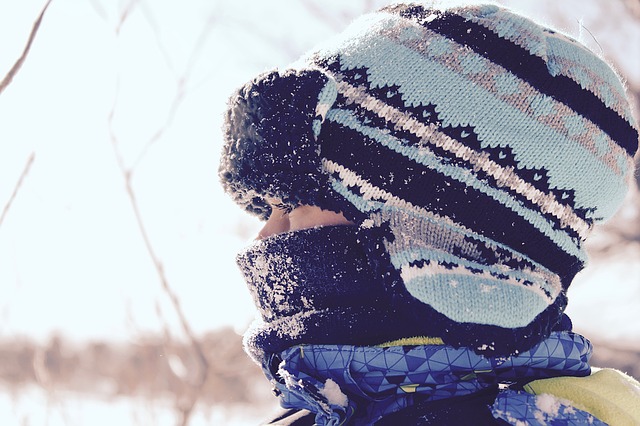Knit fabrics are used in a lot of clothing apparel, upholstery, and even towels. As the name implies, they’re what you get if you knit a textile rather than weave them. This causes a variety of properties that make them more effective in certain functions than others, though they still have a weakness or two that means for some purposes, woven is a better choice. One of the types of knit fabric is the jersey knit.
Source: https://pixabay.com/photos/winter-hat-girl-snow-season-1209119/
Most people don’t realize that there are multiple types of knit fabric, and only a few realize that the jersey knit is perhaps one of the most common. This old, reliable form of knit fabric has seen a lot of use in a lot of clothing-related functions. It is also one that can come in a variety of forms and types.
The Origins of Jersey Knit
First introduced to the fashion world in 1916 by Coco Chanel, the jersey knit was once originally wool. However, today the techniques and equipment (such as the single jersey circular knitting machine) used for this type of fabric are applied to other materials. Cotton, hemp, rayon, silk, and others can all be processed in the same way now. Fabrics of this type are among the most beloved for clothing, and that’s because of how it feels on the body.
The typical jersey knit is lightweight, though if you go with a double knit process you get something that’s closer to medium-weight. The method used to knit them together gives a great deal of stretch to the final fabric, along with making them feel comfortable on the skin. This material flexibility and sense of comfort to wear make them great for men’s and women’s clothing, along with all sorts of other apparel.
Properties of a Jersey Knit
Jersey knits results in fabrics that have many properties. The combination of these makes them ideal for anything you need close-fitting and with a little cling. However, they don’t hinder movements as some other fabrics do.
Softness
Jersey knits are soft. What will change based on material is the degree of softness, rather than just it’s presence. This makes them easy to slip in and out of, as well as very comfortable to wear for extended periods.
Flexibility
This type of fabric is known for being tough, hard to tear, and able to take a great deal of punishment. The single knit form has more stretch, but the double knit form trades some of that flexibility in for added durability.
Wrinkle Resistance
People don’t like it when their clothes wrinkle. This is something that you’d need to be trying really hard to do on a jersey knit. The fabric is just very hard to wrinkle because of the nature of it and how it’s processed. As a bonus, it tends to slowly shift back to its original shape even after being stretched, though it isn’t quite as elastic as some other options.
Drapability
Drapability in a fabric depends on how thin it is, and there are few thinner than jersey knits. Fine and near-translucent, jersey knit fabrics do have one weakness despite how easily they drape over a figure. They tend to curl at the edges, adding a touch of instability that you don’t find in heavier fabrics.
Adaptability
Jersey knit is flexible and adaptable as a material. You’ll see it used in underwear, warm cardigans, sweaters, dresses, and more. Single and double knit variations also add some flexibility, making them adaptable and not limited to just one or two seasons.
Different Types of Jersey Knit
As noted, different types of fabrics lend themselves to different uses of the jersey knit. Here’s a look at the four most common fabrics used, along with where their unique additions to the jersey knit seem them used.
Cotton
Cotton jersey is usually made entirely from cotton, but blends are not unheard of. They sacrifice a little ability to drape in favor of better structure to the overall product. It is also a breathable material, making it a common choice for kidswear or everyday apparel. The softness is a nice compliment to the knit, as well. Aside from everyday wear, the cotton jersey is also used for jackets, breeches, and some leisurewear and sportswear.
Silk
Silk is also a popular choice for a jersey knit, and offer unparalleled softness and smoothness. They are fine, thin, tend towards translucent, and have that sheen people associate with silk. Their elasticity is a natural trait but can be enhanced if lycra is added to the mix. Garments made of this drape with a slinky feel but have a strong feminine look and texture so men’s clothing rarely uses it.
Note that silk is also much more expensive than the others. In nearly all cases, though, the product is well worth the additional cost in terms of raw quality.
Wool
Wool is another option, either as a blend or pure wool. They’re lightweight, but usually, they’re preferred to be heavier and on the double knit side. It is naturally warm, making them excellent for winter-wear that’s still comfortable. They’re also breathable and versatile, making them ideal for functions like jackets, sweaters, and coats. There is a luxury factor to wool jersey knit, but it does sacrifice a little of the durability the knit is otherwise known for.
Rayon
Finally, there is rayon. These have a soft finish and are smooth to the touch. They drape almost as well as silk, though have better pliability and stretch. You’ll often see this used for shirts, tunics, skirts, and blouses. They’re also used on the occasional dress.
Conclusion
The jersey knit is a great fabric choice. It’s flexible, it’s got a lot of applications, and it’s relatively easy to work with the right industrial equipment. It made an impact when it was first introduced and it continues to play a part in the textile and fashion industries.


You can also stay updated by subscribing to iTechCode.